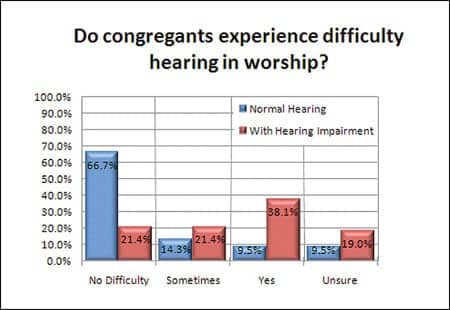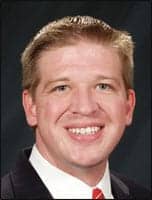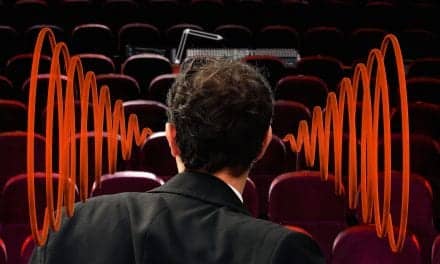Results of a survey of places of worship in one city (Gainesville, Fla) indicate that 59.5% of respondents believed congregants with hearing impairment experience difficulty hearing the service.

|

|
| Jay P. Sheehan, MHS, PhD, is a professional trainer at Beltone, Glenview, Ill. Scott K. Griffiths, PhD, is an associate professor at the University of Florida, Gainesville. Correspondence can be addressed to HR or Jay P. Sheehan, PhD, at , or Scott K. Griffiths, PhD, at . | |
Large halls with soaring spaces help create a sense of the divine in places of worship. While acoustic reflections, scattering, and long reverberation times may benefit liturgical music, these features also pose significant challenges for listeners with hearing impairments. Primary among these challenges are difficulty understanding the speech of worship leaders and other congregants, hearing the music and lyrics clearly, and remaining connected to the worship experience. Church is one of the most commonly identified situations of concern for persons with hearing loss.1 Thus, places of worship would seem to be amenable environments to employ assistive listening devices (ALDs).
Survey
To gauge current usage and potential need of assistive listening devices (ALDs) in places of worship in a medium-size city, a mailed survey was conducted in Gainesville, Fla, a central-Florida city with a population of 114,000 people. The mid-2009 survey, accompanied by a letter requesting anonymous participation, was sent to 200 places of worship in the Gainesville area listed with complete, unduplicated functional addresses on the yellowpages.com Web site. The letter briefly explained about ALDs and their function. The survey portion asked about general knowledge and provision of ALDs during worship services. The respondent was also asked to estimate their perception of the ease or difficulty of listening among congregants during worship services.
Of the 200 valid mailings, 43 were returned for a response rate of 21.5%. One questionnaire was omitted from the subsequent analysis because most questions did not contain responses. The results are summarized in Figure 1. Among the 42 completed questionnaires, the vast majority (95.2% or 40) of respondents reported the provision of an amplified public address (PA) system during their services.
A total of 16 of the 40 (38.1%) places of worship with a PA system also reported having assistive listening devices (ALDs).Of these 16 with ALDS, 11 (68.8%) described the ALD as an FM system, 3 (18.8%) did not know or did not specify the type of ALD, and 2 (12.5%) described the ALD as an infrared system.
Results
Awareness of assistive technologies. About three-quarters (33 or 78%) of the 42 respondents reported awareness of ALDs, 7 (16.8%) reported no awareness of ALDs, and 2 (4.8%) reported being “somewhat aware.” The two respondents that did not have a public address system also reported being unaware of ALDs.
When asked if there is a need for ALDs in their house of worship, 24 respondents (57.1%) indicated that there is a need, 9 (21.4%) responded that there is not a need, and 8 (19%) responded that there might be a need.
The majority of places of worship surveyed reported awareness or limited awareness (83.3%), and reported a need or potential need for ALDs (76.1%). However, only 38.1% reported that they actually had ALDs. This finding suggests that places of worship—while recognizing the need—are not providing the listening accommodations for their congregants.

|
| FIGURE 1. Summary of responses from 42 worship leaders. |
Hearing ease/difficulty for congregants with normal hearing and hearing impairment. When asked if congregants with normal hearing experience difficulty hearing the spiritual leader during the service, 28 respondents (66.7%) believed that they do not experience difficulty, 6 (14.3%) believed that members experience difficulty “sometimes,” 4 (9.5%) believed they experience difficulty, and 4 (9.5%) were “not sure” (Figure 2).
When asked if congregants with hearing impairment experience difficulty hearing during the service, 16 respondents (38.1%) believed that they experience difficulty, 9 (21.4%) believed they experience difficulty “sometimes,” 9 (21.4%) believed they did not experience difficulty, and 8 (19%) were “not sure” (Figure 2).
Overall, 23.8% of the respondents believed that congregants with normal hearing have difficulty hearing the service; a larger percentage (59.5%) believed congregants with hearing impairment experience difficulty hearing the service.
Physical volume. When the respondents were asked to estimate the physical volume inside the main area of the place of worship, 16 (38%) described the space as “medium or 20,000-100,000 cubic feet,” 12 (28.6%) described the space as “small or less than 20,000 cubic feet,” 6 (14.3%) described the space as “large or more than 100,000 cubic feet,” and 7 (16.7%) could not estimate the volume. When asked to estimate the seating capacity in the main area of worship, 20 (47.6%) estimated less than 200 people, 12 (28.6%) estimated between 200-399 people, 8 (19%) estimated between 400-799 people, and 2 (4.8%) estimated 800 or more people.
The majority of the places of worship in Gainesville were estimated to have physical volumes of less than 100,000 cubic feet (66.7%) and less than 400 people (76.1%).

|
| FIGURE 2. Perceived hearing ease/difficulty for congregants with normal hearing and hearing impairment. |
Discussion
Correlational analyses were conducted by Pearson chi-square tests. Responses were collapsed into binary responses (“yes” and “maybe” treated as affirmative responses, “no” and “not sure” treated as negative responses). Respondents who were aware of ALDs perceived that congregants with hearing loss had difficulty during the services (p<.05). Respondents who perceived a need for ALDs also perceived that congregants with normal hearing (p<.05) and congregants with hearing loss (p<.001) experience listening difficulty during the worship service. Respondents who perceived a need for ALDs also estimated a seating capacity of at least 400 congregants (p<.05).
It is unclear if the congregants were perceived to have residual difficulty when using the ALD because the questionnaire did not probe this dimension. The results from this small-scale survey (one city) may not be representative all regions and locales. However, the authors believe this data may be reflective of many locales in the United States. Additional investigation of ALD awareness and perceived listening difficulty by a sample of respondents in a congregation may provide a more valid estimate of ALD awareness and listening difficulty. The optimal subjective measurement would likely occur in a sample of places of worship with ALDs to evaluate device compatibility and sound quality among users and barriers to device acceptance among nonusers.
Reference
- Gatehouse S. Glasgow Hearing Aid Benefit Profile: derivation and validation of client-centered outcome measure for hearing aid services. J Am Acad Audiol. 1999;10: 80-103.
Citation for this article:
Sheehan JP, Griffiths SK. A survey of awareness of ALDs and hearing difficulty in places of worship. Hearing Review. 2010;17(2):18-19.





